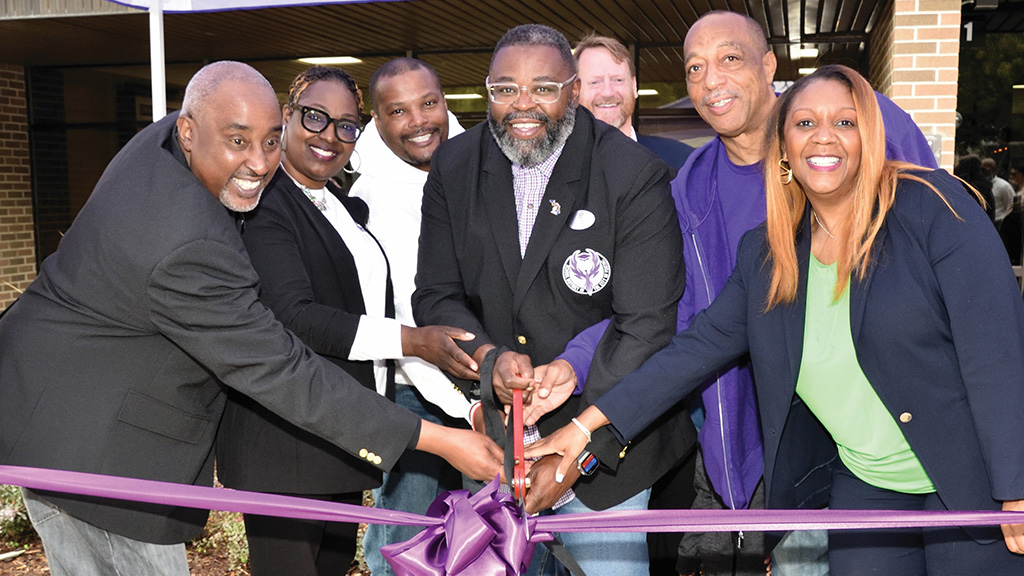
PONTIAC SCHOOL DISTRICT BOARD MEMBERS AND SUPERINTENDENT KELLEY WILLIAMS (FAR RIGHT) CUT THE RIBBON TO THE PONTIAC ALUMNI LEGACY WALK, CREATED THROUGH A COLLABORATION BETWEEN DISTRICT ADMINISTRATION, THE BOARD, AND ALUMNI.
PHOTO COURTESY OF PONTIAC SCHOOL DISTRICT.
Urban districts are the beating hearts of our societies, grappling with diverse challenges ranging from infrastructure development to social equity. To navigate these complexities successfully, a dynamic interplay among advocacy, executive leadership, and governance is essential. Let’s explore the significance of this triad in shaping the destiny of urban areas.
Advocacy: The voice of the community
Advocacy forms the bedrock of a thriving urban district by amplifying the voices of its diverse residents. Local advocacy groups, community organizations, and engaged citizens play a vital role in highlighting the unique needs and aspirations of their communities. Whether advocating for improved public services, sustainable development, or social justice, these voices provide the grassroots perspective essential for informed decision-making.
Executive leadership: crafting vision and direction
Executive leadership and school boards in urban school districts are akin to a compass guiding the way forward. School boards, superintendents, city councils, mayors, city managers, and other community leaders must possess the vision of a sustainable future for our students. They are tasked with steering urban development initiatives and balancing economic growth with social responsibility. Strong leadership fosters collaboration among stakeholders, driving innovation and resilience in the face of evolving challenges.
Governance: The backbone of effective management
Governance establishes the rules of the game in urban districts. Transparent, accountable, and responsive governance frameworks are indispensable for effective policymaking. Local governments must be equipped to address issues such as infrastructure development, education, health care, and environmental sustainability. A well-structured governance system ensures that decisions are made in the best interest of the entire community, fostering trust and cooperation.
Synergy At Work
The interaction between advocacy, executive leadership, and governance is the linchpin of urban success. Advocacy informs leadership of the real-time needs of the community, while strong executive leadership ensures these needs are addressed through strategic planning and execution. Governance provides the institutional framework necessary to translate these plans into actionable policies, balancing the interests of diverse parties.
Challenges and opportunities:
Despite their importance, these elements face challenges such as bureaucratic red tape, political polarization, and resource constraints. However, they also present opportunities for creative solutions and partnerships that can transcend traditional boundaries, fostering a more resilient and responsive urban landscape.
In the tapestry of urban development, the threads of advocacy, executive leadership, and governance are interwoven, forming a resilient and vibrant fabric. As urban districts continue to evolve, recognizing and harnessing the power of this triad becomes imperative for building cities that are not only efficient and sustainable but also inclusive and equitable. Advocacy empowers communities, executive leadership charts the course, and governance ensures the journey is guided by the collective well-being of all. Together, they forge a path toward a brighter, more sustainable urban future.
Gill Garrett (gill.garrett@pontiacschools.org) is the 2023-25 chair of the CUBE Steering Committee and president of Michigan’s Pontiac School District Board of Education.

Share this content